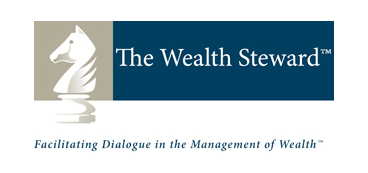By Dan Hallett on May 4, 2015
 ETFs vs. mutual funds. Indexing vs. active management. Industry professionals and investors alike have staked their respective turfs on each of these issues with a level of passion usually reserved for religious or political debates. Yet breaking down each issue’s most important components shows that most are focused on the wrong factors.
ETFs vs. mutual funds. Indexing vs. active management. Industry professionals and investors alike have staked their respective turfs on each of these issues with a level of passion usually reserved for religious or political debates. Yet breaking down each issue’s most important components shows that most are focused on the wrong factors.
Indexing vs. Active management
Indexing is an investment strategy that aims to mirror a particular financial market index – e.g. S&P 500. The indexes tracked by such funds are known as “market cap indexes” because they put heavier emphasis on companies with higher market capitalizations (i.e. the market value of all of a company’s shares outstanding).
Active management is the use of any strategy aimed at outperforming market-cap indexes. Many studies and articles have proclaimed the failure of active management – such as this recent article – showing that 75% of mutual funds lag comparable indexes. But it’s not that indexing is an inherently superior strategy or that active managers aren’t skilled.
A strong majority of active managers have outperformed indexes over time – before deducting fees and expenses. The costs incurred to access active management often eat up all of the index outperformance – i.e. value added – and then some. So it’s the cost advantage that makes indexing an attractive option – particularly for do it yourself investors.
But some investors are in a position to access cheaper active management – and they should look at this issue differently. Who are these lucky chaps? It could be anybody that is part of a large pension plan. Professional associations also sometimes provide members with access to relatively cheaper active management. And owners of 7- or 8- figure investment portfolios will find that cheaper options open up simply because they have more money to invest.
For example, the active managers that we engage to select stocks and bonds for our clients’ portfolios generally add about 0.3% to our clients’ cost vs. using indexing alternatives. Some of the managers we hire cost more than index funds but some cost less. Our clients’ 0.3% per year premium is a far cry from the 1% to 2% annual fee differences implicit in all of the pro-indexing articles that I’ve read.
In other words, active management has good odds of adding value before costs. Indexing often wins because it has a massive cost advantage over most actively managed products. But if your circumstances allow you to effectively eliminate the big cost difference between indexing and active management – particularly if you need advice – you should have a very different perspective on your choice of strategy.
Focus on process, exposure and cost
Similarly, most associate indexing with the exchange traded fund (ETF) structure. And yet one has nothing to do with the other. The first ETFs housed indexing strategies; so indexing is usually associated with ETFs and low fees – and active management with mutual funds and high fees.
But today more TSX-listed ETFs track active strategies (48% of all ETFs) than broad market indexes (11%). (The remainder passively track narrower market slices – e.g., energy stocks.) So much like the indexing vs. active management issue, the differences in product structure between funds and ETFs are irrelevant.
Investors often start by assuming they should buy ETFs – then look for a strategy that they like. But this is backwards.
Start instead by figuring out what you want your money to do for you. Translate that into quantifiable goals linked to time frames to help define a mix of stocks and bonds to achieve your target return. (Importantly, this should be documented in an Investment Policy Statement.)
Making sure that the risk you’re willing and able to take is consistent with that mix, your focus should shift toward defining the type of exposure to stocks and bonds that fits with your needs. Focusing on obtaining that exposure at reasonable cost will lead to the best and most suitable structure and product.
This summarizes how we design portfolios for our clients. It’s a rigorous process that will tilt the odds in favour of achieving your goals – and it should be used by all investors whether they’re disciplined enough to fly solo or require the help of a professional.
So forget about picking sides in silly debates. Focus on meeting your goals and doing so efficiently in terms of costs and risk. So don’t let the industry’s pumping out of product define what you buy. Rather build a sustainable investment strategy driven by your needs.
>> HighView Financial Group is an investment counselling firm for affluent families and foundations. We build portfolios based on the unique goals of each client. Schedule a complimentary discovery session to see if we’re the right investment stewardship counsellors for you.
You may also be interested in:
- Active or Passive? Process not politics should drive strategy choice
- How to Build Sustainable Family Wealth for Future Generations (and Why It’s So Difficult to Do)
- Some Advisors Behaving Badly with CRM2 on the Horizon
- Piling into U.S. stocks? Don’t Expect the Past Decade to Repeat - January 15, 2025
- The S&P 500’s Three Surprising Traits - November 6, 2024
- Savvy DIY Investors Must Plan For Succession - September 4, 2024



